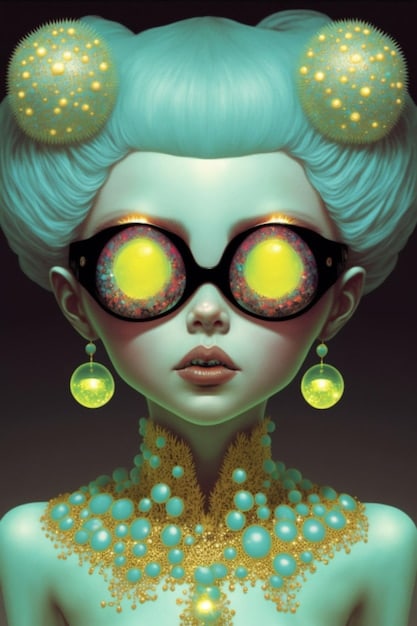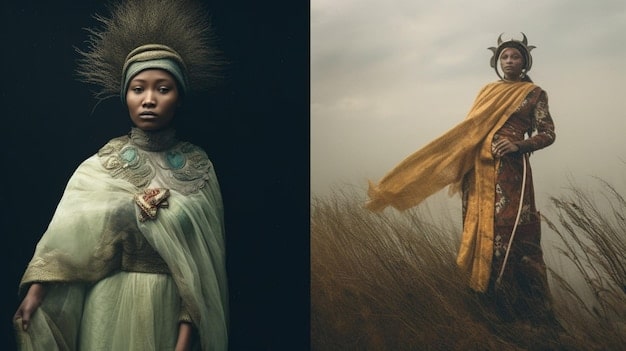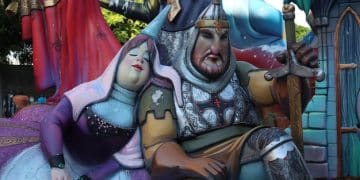What Is a Mary Sue? Understanding This Character Trope

A Mary Sue is a character archetype, typically in fan fiction, characterized by exceptional abilities, near-perfect traits, and a lack of realistic flaws, often serving as an idealized version of the author.
Have you ever encountered a character that seems too good to be true, effortlessly mastering every skill and captivating everyone around them? This might be a **Mary Sue**, a character archetype that has sparked debate and discussion within the realm of storytelling.
Understanding the Mary Sue Phenomenon
The Mary Sue archetype is often misunderstood. It’s not simply about a character being powerful or skilled, but rather how those traits are presented within the narrative. This section explores the origins, key characteristics, and common misconceptions surrounding the Mary Sue.
The Origins of the Mary Sue
The term “Mary Sue” originated in Paula Smith’s 1973 parody story “A Trekkie’s Tale,” published in her fanzine *Menagerie*. The story satirized the idealized female characters often found in fan fiction, a direct response to the less-than-diverse character options offered at the time in popular franchises. Mary Sue became shorthand for characters that didn’t seem to earn their success or who were unnaturally beloved by all other characters in the story.
Characteristics of a Mary Sue
Several hallmarks commonly associated with a Mary Sue character:
- Exceptional skills and abilities without explanation
- Overly idealized or physically attractive
- Lack of believable flaws or weaknesses
- Characters are inexplicably drawn to them
Common Misconceptions
It’s essential to dispel some common misconceptions about Mary Sues. For example, a strong female character is not automatically a Mary Sue. It’s the lack of balance and believability, the absence of genuine challenges and the narrative’s insistence on the character’s flawlessness, that defines the trope. Furthermore, a Mary Sue isn’t exclusive to female characters; its male counterpart is often referred to as a “Gary Stu” or “Marty Stu.”
Understanding the Mary Sue phenomenon requires looking beyond surface-level traits and focusing on the integrity and believability of the character’s portrayal within the story.
Identifying a Mary Sue in Literature and Media
Recognizing a Mary Sue involves assessing a few elements from stories that will highlight their presence. This isn’t just about listing traits; it’s about understanding their effect on the narrative. Real-world examples can help to sharpen your perception.

Analyzing Character Traits
Start by looking for characters with a long list of unique talents and very few flaws. Some are masters in combat, science, art, diplomacy, and more—all by the age when most folks are trying to figure out what to do after school. Consider how these skills are presented. A Mary Sue rarely practices or struggles, which makes their abilities less believable.
Look for how flaws are handled. Does the character have flaws but they are somehow considered to be endearing. Or does the character have a tragic backstory that excuses their supposed perfection? A real flaw always makes the character’s journey harder, a Mary Sue will overcome theirs with very little impact or pushback, adding to the disbelief.
Real-World Examples
Many characters have been called Mary Sues over the years, with a lot of discussion to go along with it. Bella Swan of the *Twilight* series is one such character praised for being average yet still finds herself the object of affection of two supernatural entities. Other times the character embodies all the possible skills, like Wesley Crusher from *Star Trek: The Next Generation*, praised and beloved while still being an adolescent.
The Impact on the Narrative
A Mary Sue can diminish the stakes and interest of a story. When a character is always successful and never truly challenged, it’s hard for readers to invest in their journey. Stories become predictable, and the growth of other characters can be overshadowed. Moreover, the existence of a Mary Sue can undermine the internal logic of the story’s world, making it harder to believe.
Spotting a Mary Sue is more than just noting a character’s strengths; it’s about understanding their impact on the story and its viewers.
Why the Mary Sue Trope Is Problematic
The Mary Sue trope can be problematic for several reasons, extending beyond mere narrative issues into broader cultural implications. This section delves into the main criticisms leveled against the archetype, including its impact on the story.
Undermining Narrative Tension
Perhaps the main critique is that these perfect characters eliminate tension from the story. A Mary Sue’s skills and abilities are often so overblown that they trivialize challenges, making them uninteresting for the audience. Without believable challenges, there’s no real stake.
Promoting Unrealistic Expectations
By showcasing characters that are effortlessly exceptional, the trope unwittingly promotes unrealistic expectations. Viewers may start subconsciously anticipating innate, instantaneous success without the need for effort or perseverance. This is especially problematic concerning young audiences who’re still forming their understanding of dedication and hard work.
The Mary Sue and Gender
The term, in general, has been applied more often to female characters which introduces a gender issue to keep in mind. When the archetype is applied mainly to female characters, it can create a double standard in storytelling. Male characters are often celebrated for their strengths and skills without facing the same degree of criticism. This can reinforce gender biases about what’s considered “acceptable” in a protagonist.
The Mary Sue trope faces a variety of criticisms, as concerns are raised about the nature of the characters.
The Evolution of the Mary Sue in Modern Storytelling
The Mary Sue trope started with a specific meaning, but its role in storytelling has changed over the years. What started as a critique has become more nuanced, with modern authors tweaking it to explore new themes.
Deconstructing the Trope
Some modern authors actively deconstruct the Mary Sue trope, using it to comment on the unrealistic expectations often placed on characters. These stories typically feature a character with Mary Sue traits, but they’re aware of their perceived perfection, or that perfection is challenged in a realistic way.
Subverting Expectations
Modern authors also play with audience expectations. They might present a character as a Mary Sue initially, only to subvert this portrayal later. These subversive approaches challenge viewers to rethink their perceptions of character archetypes. The result is a more engaging, thought-provoking experience.

The Rise of the Anti-Sue
The “Anti-Sue” is a character intentionally created to be the opposite of a Mary Sue. They are filled with flaws, often incompetent, and generally unlikable. While the Anti-Sue can be a fun contrast, it also can fall into the trap of being one-dimensional.
The Mary Sue trope started out as mocking perfect characters but has changed a lot. Now, creators use it in clever ways to play with viewers and make them think about what makes a good story.
How to Write Characters That Avoid the Mary Sue Label
Creating characters that resonate with audiences is a delicate balance. It’s about making characters strong, capable, and likeable, but at the same time, keeping them realistic and relatable. Here are some principles.
Develop Believable Flaws
One way to avoid Mary Sue traits is to equip the character with multiple flaws that affect their journey or have impact on other characters. They fail and have difficulty learning from their failures, so the cycle begins again. Flaws that are merely endearing quirks don’t hold enough impact and come across as unrealistic.
Create Realistic Challenges
Ensure that your characters face challenges that reflect their flaws and the world around them. A character’s struggles should push them to grow and change. The more unique the character, the more unique the challenges should be.
Give Other Characters Agency
Avoid making every character in the story adoring of the protagonist. Allow other characters to have their opinions, motivations, and agency.
- Develop individual backstories for your characters
- Understand the role each character plays within the story
- Give other characters importance
Show, Don’t Tell
“Show, Don’t Tell” is an important rule for storytelling. Display your character’s abilities in action rather than merely stating them. Let viewers discover the characters’ power organically through their actions.
Writing a character that is complex and has strengths and weaknesses is essential in writing and staying away from stereotypes. Make sure that as you build the character, they continue to go on a journey of growth and change.
The Enduring Relevance of Character Archetypes
Despite the potential pitfalls, character archetypes like the Mary Sue continue to be important. They can be powerful tools for exploration. Understanding the importance of tropes such as these can help to craft better stories.
Archetypes as a Reflection of Society
Character archetypes are a reflection of society’s values, fears, and hopes. By examining these archetypes, we can gain insight into larger social trends. For example, the rise of heroic characters in times of crisis reflects a collective desire for leadership and solutions.
Tools for Understanding Storytelling
Beyond their social relevance, archetypes serve as tools for understanding storytelling. They offer a framework from which to interpret narratives, and they can help viewers and critics identify common themes and structures.
- How the trope is being used for story purposes
- Understanding tropes is to understand stories and characters
- Being able to analyze the construction
Evolution and Adaptation
The enduring power of character archetypes lies in their capacity for evolution. As society changes, so do the archetypes. Characters can be tweaked to show growth or to provide satire on the stereotype that’s in place.
Understanding the Mary Sue and other tropes and archetypes helps to build upon past stories and push the boundaries of the characters that are being built.
| Key Aspect | Brief Description |
|---|---|
| 🌟 Mary Sue Definition | Character archetype with exceptional, often unrealistic abilities. |
| 🤔 Identifying Traits | Look for characters lacking flaws and facing few real challenges. |
| 🎭 Narrative Impact | Mary Sues can reduce story tension by being too easily successful. |
| ✍️ Avoiding the Trope | Give characters realistic flaws and significant challenges. |
Frequently Asked Questions
▼
Not necessarily. The Mary Sue trope can be used intentionally for satire, deconstruction, or character studies. It becomes problematic when it diminishes story tension or promotes unrealistic expectations.
▼
Yes, the male counterpart is often referred to as a “Gary Stu” or “Marty Stu.” They exhibit the same traits of unrealistic perfection and lack of believable flaws.
▼
Flaws make characters relatable and human. They create opportunities for growth, change, and conflict, adding depth and interest to their journey.
▼
They often make stories uninteresting because they can’t be challenged. Everything goes their way without much difficulty, they lose the appeal to the audience.
▼
Authors or characters can use the trope to challenge viewers’ thoughts and perspectives on what a good story or character should be. Many have shifted their thinking due to this.
Conclusion
Understanding the Mary Sue archetype and how it has transformed over the years can help you to build your own strong main character that has depth. Keep the qualities and flaws and your character can be one that captivates your audience and delivers meaningful messages.
![The Allure of [Keyword]: Why This K-Drama Trope Still Captivates Us The Allure of [Keyword]: Why This K-Drama Trope Still Captivates Us - Cover Image](https://newsdoramauniverse.com/wp-content/uploads/2025/07/newsdoramauniverse.com_14_1753809365_ed831f0a_cover-360x180.jpg)




